-

The APC gene
APC genes are a group of tumor suppressor genes that play a crucial role in preventing the development of colon cancer. Mutations in APC genes can lead to the accumulation of beta-catenin in the cell, which can activate the Wnt signaling pathway and lead to uncontrolled cell growth and the development of tumors. Understanding the…
-

Endoplasmic Reticulum
The Endoplasmic Reticulum (ER) is a vital organelle in eukaryotic cells, playing multiple crucial roles. From protein synthesis, folding, and modification to lipid metabolism and calcium storage, the ER ensures the cell’s proper functioning. The Rough ER, adorned with ribosomes, synthesizes proteins, while the Smooth ER is responsible for lipid synthesis and detoxification. Additionally, the…
-

Regulation of the Cell Cycle
he cell cycle is a crucial process in the growth and development of multicellular organisms, and its regulation is essential for maintaining proper cell function. Dysregulation of the cell cycle can lead to various diseases, including cancer, where cells divide uncontrollably. The regulation of the cell cycle is a complex process that involves a delicate…
-

Mitosis: Cell Division
Mitosis cell division is essential for the growth and repair of an organism. Mitosis involves four main stages: prophase, metaphase, anaphase, and telophase, followed by cytokinesis, the final stage where the cell physically divides into two identical daughter cells. The proper execution of mitosis is critical for the accurate replication and segregation of DNA and…
-

The RAS gene
This text describes the significance of RAS gene mutations in the development and treatment of cancer. RAS genes play a vital role in regulating cell growth, and mutations in these genes can lead to the development of various cancers, including colorectal, lung, and pancreatic cancer. The three main isoforms of the RAS gene – KRAS,…
-

Lysozomes
Lysozomes, the essential organelles in eukaryotic cells, play a pivotal role in cellular material degradation. Enclosed within a lipid bilayer, these spherical structures house hydrolytic enzymes responsible for breaking down bacteria, old organelles, and other cellular components. Additionally, lysozomes contribute to autophagy, cellular protection against harmful agents, and lipid metabolism. Formation from the Golgi apparatus…
-
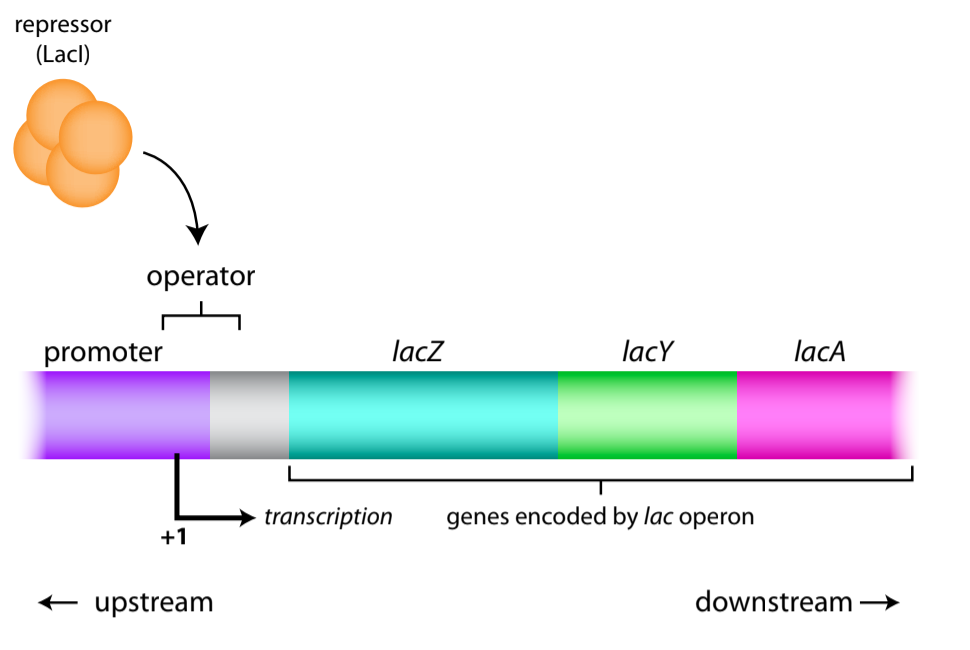
Lac Operon- Gene Regulation in Bacteria
The lac operon, found in E. coli bacteria, is a remarkable genetic system that controls the metabolism of lactose, a sugar commonly present in milk. This operon comprises three crucial structural genes: lacZ, lacY, and lacA, responsible for encoding the essential enzymes needed to break down lactose into glucose and galactose. Its significance in the…
-

Structure of Protein
Proteins are essential macromolecules that play a crucial role in many biological processes. They are made up of amino acids, which are linked together through peptide bonds to form a linear chain. The sequence of amino acids in a protein determines its three-dimensional structure and, consequently, its function. In this study note, we will explore…
-

Meiosis: Cell Division
The text explains the process of meiosis, which is a type of cell division that produces reproductive cells or gametes. Meiosis reduces the chromosome number by half and is divided into two rounds of cell division: meiosis I and meiosis II. In meiosis I, the chromosomes pair up with their homologous partner, exchange genetic material…
-

Oncogenes and Tumor suppressor genes
The molecular genetics of cancer involves the study of the genetic and molecular changes that occur in cells as they become cancerous. This field of study has led to the identification of two important classes of genes involved in the development of cancer: oncogenes and tumor suppressor genes. Oncogenes promote cell growth and proliferation, while…
-

The cytoskeleton
The cytoskeleton, a complex network of protein filaments, serves as the architectural backbone of eukaryotic cells. Comprised of microfilaments, intermediate filaments, and microtubules, it provides structural support, cell shape, and motility. Functionally versatile, the cytoskeleton plays crucial roles in cell division, endocytosis, and exocytosis. Regulated by specific proteins, its dynamic nature underlies various cellular processes.…
-
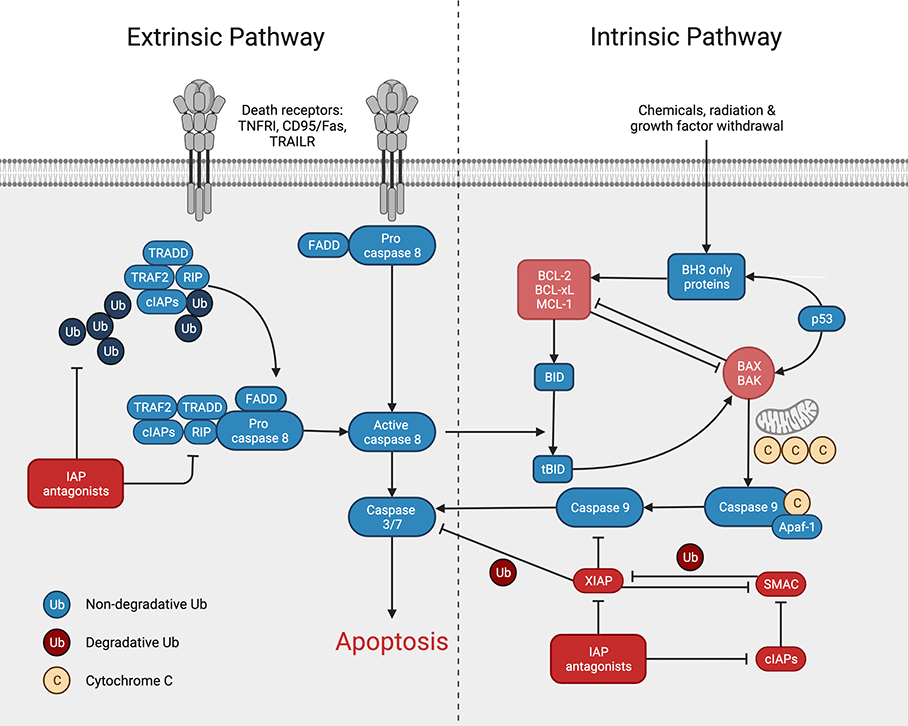
Apoptotic Pathway
Apoptotic pathways, the intricate networks regulating programmed cell death, are vital for various biological processes and disease outcomes. Understanding these pathways, including the intrinsic and extrinsic routes, sheds light on cell death mechanisms and their implications in health and disease. The interplay between pro-apoptotic and anti-apoptotic proteins and the activation of caspases shape the fate…
-

Lipids
Lipids are essential macromolecules that play a vital role in various biological processes. This guide explores the structure and function of lipids, their types, and their importance in energy storage, signaling, and cell membrane formation. We discuss the building blocks of lipids, including fatty acids and glycerol, and the types of lipids, including triglycerides, phospholipids,…
-

Lytic Cycle
The lytic cycle is a process used by certain viruses to reproduce and spread. It involves the virus infecting a host cell, using the host’s cellular machinery to replicate itself, and causing the host cell to lyse or burst, releasing new viral particles. This cycle can cause significant damage to the host cells and tissues,…
-

Cancer and cell cycle
The article explains the role of the cell cycle in the development of cancer. The cell cycle is a series of events that a cell goes through as it grows and divides into two daughter cells. Disruption in the regulation of the cell cycle can lead to uncontrolled growth and proliferation of cells, causing cancer.…
-
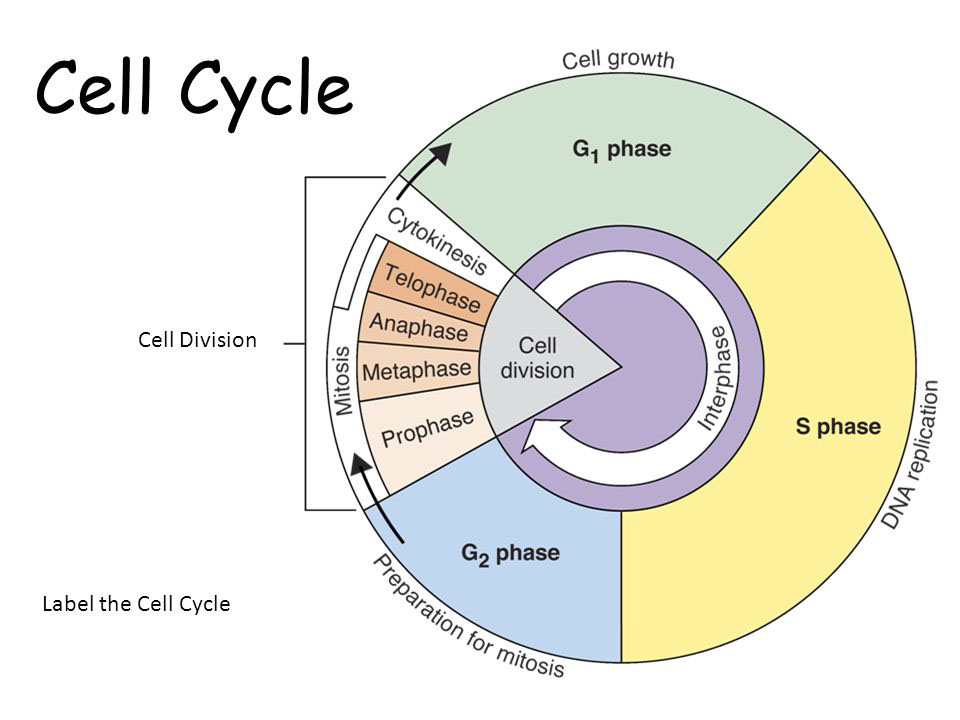
Cell Cycle (Basic)
I. Introduction II. Interphase A. G1 phase B. S phase C. G2 phase III. Mitotic Phase IV. Conclusion
-

Enzyme-substrate interaction
Enzymes are crucial biomolecules that facilitate specific chemical reactions in living organisms. They do this by binding to specific molecules known as substrates, and this interaction is key to their function. Enzymes can only catalyze specific types of reactions, and this specificity is determined by the unique shape of their active site, which is in…
-

Lysogenic Cycle
The lysogenic cycle is a reproductive cycle used by certain viruses to infect and replicate within a host cell. During this cycle, the virus inserts its genetic material into the host cell’s DNA, becoming a dormant or latent infection. This period of dormancy allows the virus to evade the host immune response and persist within…
-

Regulation of Transcription in Eukaryotes
Transcription regulation is a vital process in eukaryotes that enables the control of gene expression. It is achieved through the interaction of various proteins, non-coding regions of DNA, and small non-coding RNAs. Activators, enhancers, silencers, repressors, miRNA-mediated gene silencing, and genetic imprinting are all mechanisms that contribute to this control. Activators increase the rate of…
-
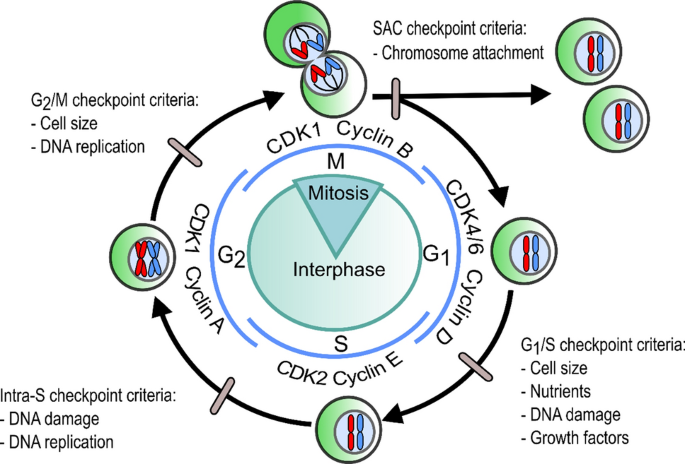
Cell cycle regulatory proteins
I. Introduction II. Cyclin-dependent kinases (CDKs) III. Cyclin-dependent kinase inhibitors (CKIs) IV. Retinoblastoma protein (Rb) V. Tumor protein p53 (p53) VI. Conclusion
-

GPCR Signalling Pathway
The G protein-coupled receptor (GPCR) signalling pathway plays a vital role in transmitting signals from extracellular molecules, such as hormones, to intracellular effectors. This pathway involves a series of steps, including hormone binding to the GPCR, activation of the G protein, signal transduction, termination of the signal, and ultimately leading to a cellular response. The…
-

Central Dogma of Molecular Biology
The central dogma of molecular biology is a fundamental principle that explains the flow of genetic information in living organisms. It states that genetic information flows from DNA to RNA to proteins, but not the reverse. This principle has been a fundamental concept in the field of molecular biology and has helped to understand many…
-

Knock Out and Knock Down Gene
The text discusses the molecular basis of knock out and knock down gene mechanisms, which are powerful tools for studying gene function. It explains how these mechanisms work, the methods used to generate them, and their advantages and disadvantages. The downstream effects of gene disruption can vary depending on the gene and organism being studied,…
-
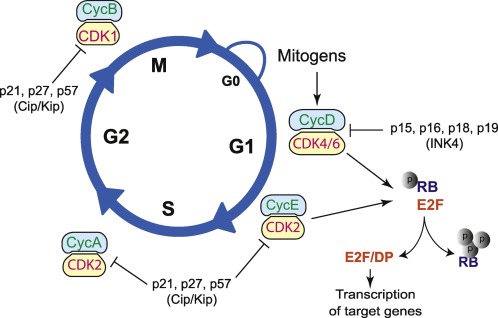
Eukaryotic cell cycle regulation
The cell cycle is a precisely regulated process essential for cell growth and division. It consists of four distinct phases: G1, S, G2, and mitosis. Each phase plays a crucial role in ensuring accurate cell division and maintaining genomic integrity. The cell cycle is governed by various checkpoints that assess DNA integrity, availability of growth…
-

RNA Interference (RNAi)
The article provides an introduction to RNA interference (RNAi), a process by which the expression of specific genes is regulated at the post-transcriptional level. It explains the biochemistry of siRNA and shRNA, the mechanism of action, and the downstream effects of RNAi. The article also discusses the role of RNAi in cancer treatment and defense…
-

RFLP (Restriction Fragment Length Polymorphism)
The excerpt introduces RFLP, a molecular biology method for detecting DNA sequence variations. It explains the principle of restriction enzymes cutting specific DNA sequences and generating restriction fragments. The procedure involves DNA isolation, digestion, gel electrophoresis, and hybridization with labeled probes. RFLP’s applications span genetics, forensic science, and medical diagnostics. Despite its replacement by newer…
-

Krebs cycle
occur in the mitochondria of cells. It is a crucial process in cellular respiration, where it breaks down carbohydrates, fats, and proteins into energy that the cell can use. In this article, we will explore the definition, equation, enzymes, and steps involved in the Krebs cycle, as well as its importance in cellular metabolism. Understanding…
-

The reflex action and reflex ARC
The reflex arc is a rapid and involuntary movement in response to a stimulus, and it is a critical process for the survival of many species, including humans. It involves a series of sensory, motor, and interneurons that allow for a quick and coordinated response to a stimulus. The reflex arc consists of five components,…
-

Prokaryotic Transcription
Introduction: Promoter recognition and binding: Initiation: Elongation: Termination: In summary, Prokaryotic transcription is the process of converting genetic information from DNA to RNA. This process is mediated by the enzyme RNA polymerase. The process includes promoter recognition and binding, initiation, elongation, and termination. The RNA polymerase recognizes the promoter by the help of sigma factor…
-

Functions of Antibodies
This text provides an overview of the critical functions of antibodies, also known as immunoglobulins, in the immune response. Antibodies are a class of proteins that play a vital role in protecting the body from infection and disease. They are produced by B-lymphocytes and can bind specifically to a wide variety of antigens. Antibodies are…
-

Osmosis
Osmosis is a process that occurs naturally in all living things, including plants and animals. It is a type of passive transport that involves the movement of water molecules across a selectively permeable membrane from an area of high concentration to an area of low concentration. This movement of water molecules helps maintain the balance…
-

Eukaryotic transcription
The eukaryotic transcription process is a fundamental process for gene expression in eukaryotic cells. This process involves several steps that are tightly regulated and require the coordinated action of multiple proteins and regulatory factors. The initiation step is the first and most critical step in the transcription process. It involves the recruitment of RNA polymerase…
-

Insulin Signaling
The Insulin Signaling Study Notes explain the complex process of how the hormone insulin regulates glucose metabolism in cells. The notes cover the interaction of insulin with its receptors, downstream signaling pathways, insulin resistance, and the significance of understanding insulin signaling in various diseases. These notes are essential for students studying physiology, biochemistry, and endocrinology,…
-

Restriction Endonucleases
Restriction endonucleases, the DNA-cutting enzymes, are indispensable in molecular biology research. Classified into four types based on recognition sites, Type II enzymes stand out as the most widely used. They cleave DNA at specific sequences, generating fragments with blunt or sticky ends. Despite their complexity, Type I and III enzymes have limited use due to…
-

Electron Transport Chain: The Powerhouse of Cellular Respiration
Introduction: Structure of the Electron Transport Chain Complexes of ETC: The ETC is made up of four protein complexes: Complex I, Complex II, Complex III, and Complex IV. Each complex has a specific function in the ETC, and the electron transfer between complexes is tightly regulated. Complex I (NADH-CoQ oxidoreductase): Complex I is the first…
-
Post transcriptional processing
Post-transcriptional processing refers to the set of modifications and events that occur to the RNA molecule after transcription, but before translation. These modifications are important for the stability, localization, and translation of the RNA molecule. Capping, polyadenylation, splicing, RNA editing, RNA localization, and RNA stability are all important aspects of post-transcriptional processing.
-

Cellular Compartmentalization
Cellular compartmentalization is a fundamental process that allows eukaryotic cells to carry out different functions simultaneously and create specialized environments within the cell. The different compartments within the cell have specific functions and contain specific proteins and other molecules. Dysfunction in cellular compartmentalization can lead to various diseases, highlighting the importance of this process in…
-

Peroxisome: Structure and Function
Peroxisomes are small, spherical organelles found in eukaryotic cells that play a crucial role in cellular metabolism. They are enclosed by a single membrane and contain enzymes responsible for specific metabolic reactions, such as the metabolism of lipids and the detoxification of harmful substances. Peroxisomes are distinct from lysosomes, as they do not degrade macromolecules.…
-

Translation
The molecular basis of translation is the process by which the genetic information stored in RNA is converted into a functional protein. This process occurs on ribosomes, which are large complexes of proteins and RNA molecules. The process of translation is divided into three main stages: initiation, elongation, and termination. In the initiation stage, a…
-

Enzymes : classification
Enzymes are incredibly important biomolecules that play a crucial role in the proper functioning of living organisms. They catalyze specific chemical reactions, making it possible for various biological processes such as metabolism, DNA replication, and cell signaling to occur efficiently. The structure of enzymes is complex, with different levels of organization, including the primary, secondary,…
-

Chemiosmotic hypothesis
The chemiosmotic hypothesis proposed by Peter Mitchell in 1961 is a widely accepted model that explains how living organisms convert energy from electron transfer reactions into ATP synthesis. This hypothesis revolutionized our understanding of how cells generate ATP, the universal energy currency of living systems, and it is a fundamental principle of bioenergetics. The chemiosmotic…
-

Post translational processing
Post-translational processing refers to the series of modifications that occur to a protein after it has been synthesized by the ribosome. These modifications can include folding, cleavage, phosphorylation, acetylation, glycosylation, ubiquitination, and methylation. Each modification is mediated by a specific enzyme and can have a significant impact on the stability, activity, and localization of the…
-

Centrosomes Structure and Function
Centrosomes are vital organelles in eukaryotic cells that play an essential role in the organization of the cell’s microtubule cytoskeleton and the proper distribution of genetic material during cell division. Composed of two cylindrical centrioles surrounded by pericentriolar material, these organelles act as nucleation sites for the formation of microtubules, which are crucial for cell…
-

Molecular genetics of cancer
This topic discusses the molecular genetics of cancer, which involves the study of genetic and molecular changes that occur in cells as they become cancerous. It explains the role of oncogenes and tumor suppressor genes in the development of cancer and how mutations in these genes can disrupt the balance between cell growth and proliferation.…
-

Apoptosis – Molecular Basis
Apoptosis, also known as programmed cell death, is a crucial process in multicellular organisms that plays a key role in maintaining tissue homeostasis and responding to cellular stress and damage. Dysregulation of apoptosis can lead to various diseases, including cancer and autoimmunity. The molecular basis of apoptosis involves two main pathways: the extrinsic pathway, which…
-

Chromatin Packaging
Chromatin packaging is a crucial process for the proper functioning of cells. It allows the genetic material to be compacted and organized within the nucleus, which is essential for the efficient use of space and the proper regulation of gene expression. Without proper chromatin packaging, cells can experience a range of problems, including aberrant gene…
-

The p53 gene
The p53 gene is a crucial gene in the human body that plays a critical role in regulating cell growth and division. The gene encodes a protein called p53, which acts as a checkpoint protein to monitor the integrity of the genome and respond to DNA damage. When DNA damage is detected, p53 can activate…
-

Apoptotic pathways
Apoptosis is a crucial physiological process that plays a key role in the development and maintenance of tissue homeostasis, as well as in the response to cellular stress and damage. The process of apoptosis is regulated by a complex network of molecular pathways, including the extrinsic and intrinsic pathways. In the extrinsic pathway, signals from…
-

Nucleus – Ultra structure
The nucleus is a vital organelle found in eukaryotic cells, which contains the genetic material of the cell in the form of DNA. It plays a significant role in the regulation of cell growth, division, and gene expression. The ultrastructure of the nucleus includes the nuclear envelope, nucleoplasm, and chromatin. The nuclear envelope surrounds the…
-

Retinoblastoma
Retinoblastoma is a rare type of cancer that affects the retina of the eye and is caused by mutations in the retinoblastoma (RB) gene. The RB gene plays a critical role in the regulation of cell growth and division, acting as a tumor suppressor by inhibiting the activity of other proteins that are important for…
Categories
- Anatomy (9)
- Animal Form and Functions (38)
- Animal Physiology (65)
- Biochemistry (33)
- Biophysics (25)
- Biotechnology (52)
- Botany (42)
- Plant morphology (6)
- Plant Physiology (26)
- Cell Biology (107)
- Cell Cycle (14)
- Cell Signaling (21)
- Chemistry (9)
- Developmental Biology (36)
- Fertilization (13)
- Ecology (5)
- Embryology (17)
- Endocrinology (10)
- Environmental biology (3)
- Genetics (59)
- DNA (27)
- Inheritance (13)
- Histology (3)
- Hormone (3)
- Immunology (29)
- life science (76)
- Material science (8)
- Microbiology (18)
- Virus (8)
- Microscopy (18)
- Molecular Biology (113)
- parasitology (6)
- Physics (3)
- Physiology (11)
- Plant biology (26)
- Uncategorized (7)
- Zoology (112)
- Classification (6)
- Invertebrate (7)




